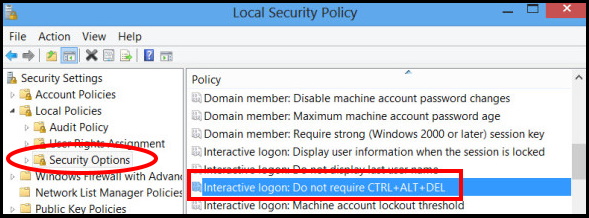
- #Preference manager windows ctrl alt delete how to
- #Preference manager windows ctrl alt delete windows
Keep this in mind when using and editing keyboard shortcuts.
#Preference manager windows ctrl alt delete windows
For example if the W(indows) key opens the LXQT application menu (equivalent of the windows start menu) in Global-keys, Openbox commands like window resizing (W + arrow keys) will not work correctly. If a key is used in Global-keys, it will not work in Openbox keyboard shortcuts. If you are selecting large sections of text, you can do so by moving the curser to the end of the section you wish to select and pressing Option+Shift+Up Arrow until all the text is selected.Global-keys will take preference over openbox bindings.Option+Right Arrow: Move the cursor to the end of the next word.Option+Left Arrow: Move the cursor to the beginning of the previous word, add Shift to this to highlight the text.Control+E: Move to the end of a line or paragraph.
#Preference manager windows ctrl alt delete how to
How to find End and Home on a Mac keyboard)

Control+Shift+Power button: Puts your display to sleep.Control+Command+Power button will restart your Mac.Basic Apple keyboard shortcutsįor Mac newbies and oldies alike, these keyboard shortcuts will probably be the ones you use the most: If you don’t have an Apple Keyboard these key combos should still, work – sometimes you have to hit a Windows key instead of Command. Zap the Mac’s NVRAM, reset the SMC, or boot into Recovery mode, there are keyboard combinations that you hold down while booting your Mac. Command+Shift+Option+Esc (for three seconds): Force-quit the front-most applicationĪpple has a set of keyboard commands you can use to make your Mac do certain tasks at startup.


If you are having trouble with a faulty Mac the following key combinations could be useful. Open Command Prompt and type gpupdate /force and hit enter, Once the. Double click on the Remove Task Manager Policy to open the Policy Settings. (⌘+Y also works for single files, but in that case it’s less convenient.) Once that window is open, you can navigate between the files with the arrow keys in the upper left. From the left-hand side click on Ctrl+Alt+Del Options, and from the right-hand side look for the Policy named Remove Task Manager. You can also select multiple files to preview at once by holding down the Command key as you select them and then pressing ⌘+Y. (This also works with files on the desktop.) A full-page preview will pop up-and with Markup options, too. This works for everything from images and PDFs to Microsoft Excel files. Click+Space Bar: If you want to see what a file looks like but you don’t want to waste time opening the associated app, select the file in a Finder folder and then press the space bar.


 0 kommentar(er)
0 kommentar(er)
